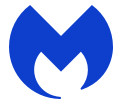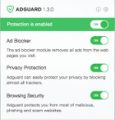What is ComputingInteractive
ComputingInteractive is an adware application that targets Mac platform. Adware is considered by many to be synonymous with ‘malware’. It is a malicious application which serves unwanted ads to computer users. Some examples include pop-up ads, push notifications, different offers and deals, unclosable windows and even fake virus alerts. Adware can be installed onto Mac computers via infected web-sites, when users open email attachments, anytime users install malicious downloads, fake updates and free software.
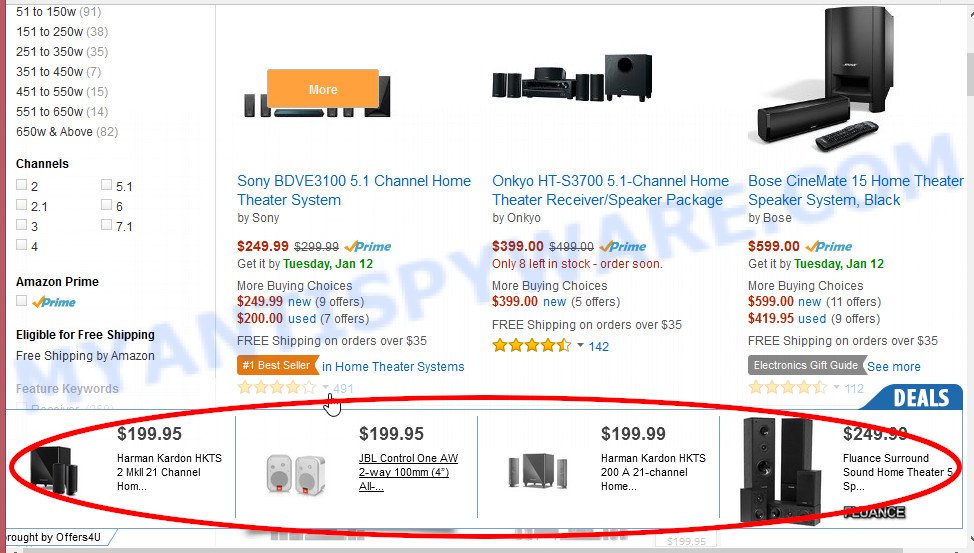
Unwanted ads
Does adware steal your confidential information? ComputingInteractive has the ability to collect your sensitive information to get profit. It can analyze your browsing, and gain access to your confidential info and, later, can sell it to third party companies. Thus, there are more than enough reasons to remove the adware from your Mac.
If you are unfortunate have adware software or malware running on your MAC OS, you can follow the suggestions here to remove ComputingInteractive from your Apple Mac and web browser.
How does ComputingInteractive get on your Apple Mac
Usually, adware gets into MAC computers as part of a bundle with freeware, sharing files and other unsafe apps which users downloaded from the Net. The creators of adware pays software developers for distributing adware within their software. So, third-party apps is often included as part of the setup file. In order to avoid the installation of any adware: select only Manual, Custom or Advanced setup type and uncheck all bundled software in which you are unsure.
Threat Summary
| Name | ComputingInteractive, “ComputingInteractive 1.0 extension” |
| Type | adware software, potentially unwanted program (PUP), Mac malware, Mac virus |
| Detection Names | MacOS.Agent-MT, Program:MacOS/Vigram.A, OSX.Trojan.Gen, Osx.Adware.Cimpli, Trojan-Downloader.OSX.Adload, ApplicUnwnt, Adware.MAC.Generic and Adware/Adload!OSX |
| Distribution | Freeware installers, misleading pop-up ads, fake update tools and torrent downloads |
| Symptoms | Your internet browser is redirected to web-sites you did not want, unwanted advertising links appear on webpages that you are visiting, your MAC starts automatically installing unwanted apps, unwanted toolbars on your desktop, unwanted changes in your web-browser such as using a new default search engine, slow Internet or slow browsing. |
| Removal | ComputingInteractive removal guide |
How to remove ComputingInteractive adware software
There are several steps to deleting the ComputingInteractive adware, because it installs itself so deeply into the computer. You need to delete all suspicious and unknown software, then get rid of harmful add-ons from the Firefox, Google Chrome and Safari and other web-browsers you have installed. Finally, you need to reset your web-browser settings to get rid of any changes the adware software has made, and then scan your Apple Mac with MalwareBytes Anti-Malware to ensure the adware software is fully removed. It will take a while.
To remove ComputingInteractive, complete the steps below:
- Remove unwanted profiles on Mac device
- Delete ComputingInteractive associated software by using the Finder
- Remove ComputingInteractive related files and folders
- Scan your Mac with MalwareBytes
- Remove ComputingInteractive from Safari, Chrome, Firefox
- How to stay safe online
Remove unwanted profiles on Mac device
ComputingInteractive can make changes to the Mac system such as malicious changes to browser settings, and the addition of malicious system profiles. You need to check the system preferences, find and remove malicious profiles and ensure your settings are as you expect.
Click the System Preferences icon ( ![]() ) in the Dock, or choose Apple menu (
) in the Dock, or choose Apple menu ( ![]() ) > System Preferences.
) > System Preferences.
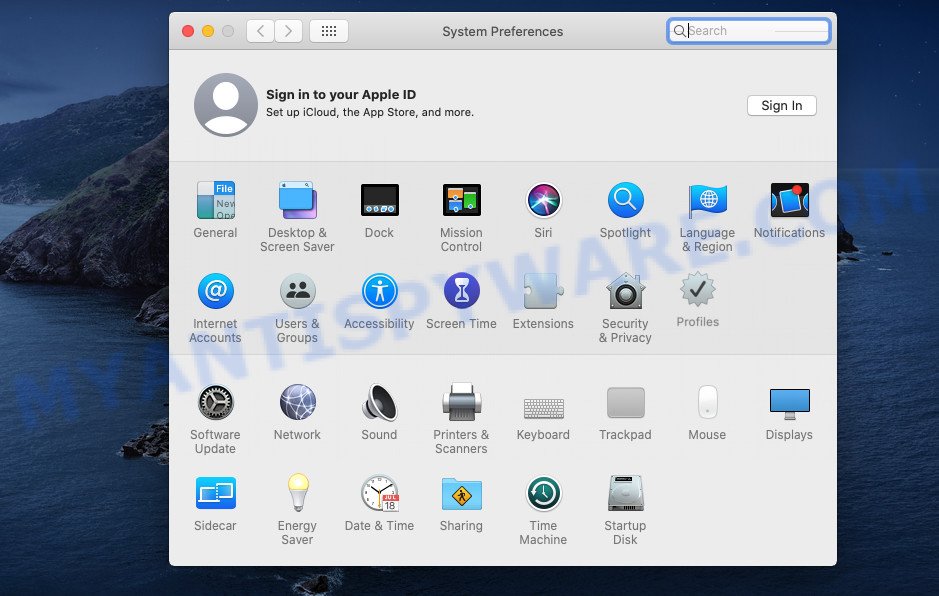
In System Preferences, click Profiles, then select a profile related to ComputingInteractive.
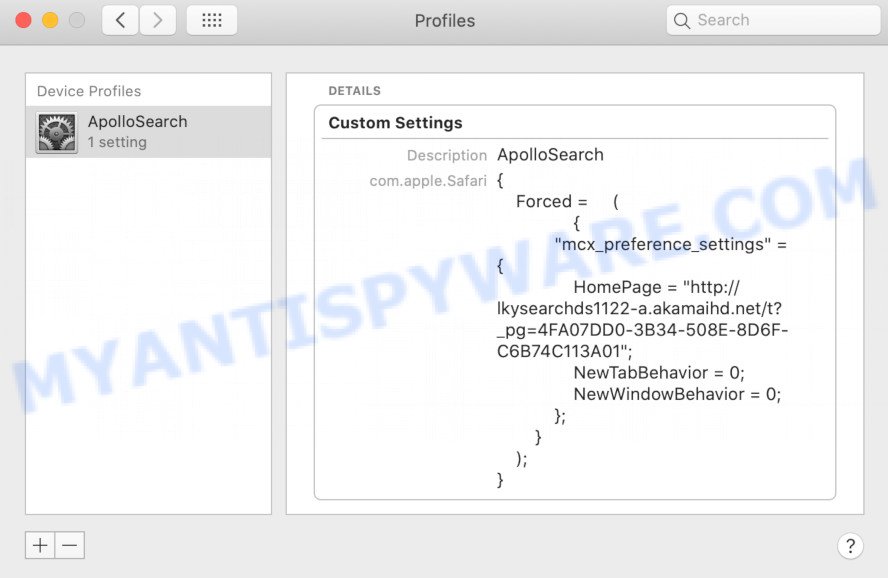
Click the minus button ( – ) located at the bottom-left of the Profiles screen to remove the profile.
Note: if you do not see Profiles in the System Preferences, that means there are no profiles installed on your Mac device, which is normal.
Delete ComputingInteractive associated software by using the Finder
It’s of primary importance to identify and remove potentially unwanted programs, adware software and browser hijackers through ‘Applications’ section of your Finder.
Open Finder and click “Applications”.
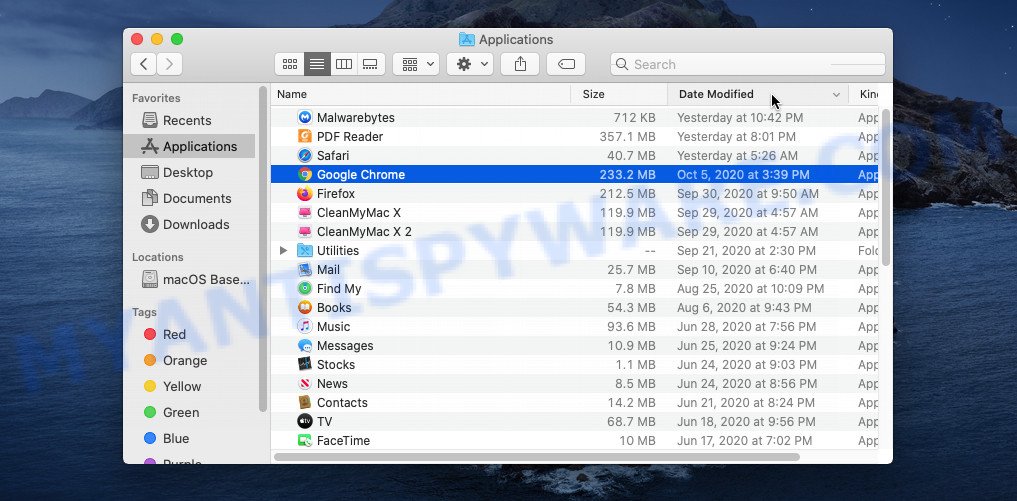
Very carefully look around the entire list of apps installed on your MAC OS. Most likely, one of them is the ComputingInteractive adware software. Once you’ve found a dubious, unwanted or unused program, right click to it and choose “Move to Trash”. Another solution is drag the program from the Applications folder to the Trash.
Don’t forget, choose Finder -> “Empty Trash”.
Remove ComputingInteractive related files and folders
Now you need to try to find ComputingInteractive related files and folders, and then delete them manually. You need to look for these files in certain directories. To quickly open them, we recommend using the “Go to Folder…” command.
ComputingInteractive creates several files, these files must be found and removed. Below is a list of files associated with this unwanted program.
- /Library/LaunchDaemons/com.ComputingInteractive.system.plist
- ~/Library/LaunchAgents/com.ComputingInteractive.service.plist
- /Library/Application Support/.(RANDOM)/System/com.ComputingInteractive.system
- ~/Library/Application Support/.(RANDOM)/Services/com.ComputingInteractive.service.app
Some files created by ComputingInteractive are hidden from the user. To find and delete them, you need to enable “show hidden files”. To do this, use the shortcut CMD + SHIFT + . Press once to show hidden files and again to hide them. There is another way. Click Finder -> Applications -> Utilities -> Terminal. In Terminal, paste the following text: defaults write com.apple.finder AppleShowAllFiles YES

Press Enter. Hold the ‘Option/alt’ key, then right click on the Finder icon in the dock and click Relaunch.
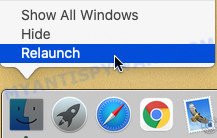
Click on the Finder icon. From the menu bar, select Go and click “Go to Folder…”. As a result, a small window opens that allows you to quickly open a specific directory.

Check for ComputingInteractive generated files in the /Library/LaunchAgents folder

In the “Go to Folder…” window, type the following text and press Go:
/Library/LaunchAgents
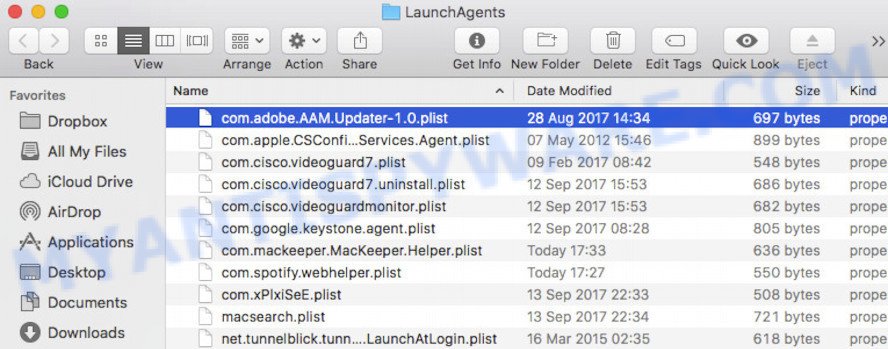
This will open the contents of the “/Library/LaunchAgents” folder. Look carefully at it and pay special attention to recently created files, as well as files that have a suspicious name. Move all suspicious files to the Trash. A few examples of files: com.machelper.plist, com.net-preferences.plist, macsearch.plist, com.google.defaultsearch.plist, , installapp.plist, com.ComputingInteractive.service.plist and search.plist. Most often, adware, PUPs and browser hijackers create several files with similar names.
Check for ComputingInteractive generated files in the /Library/Application Support folder

In the “Go to Folder…” window, type the following text and press Go:
/Library/Application Support
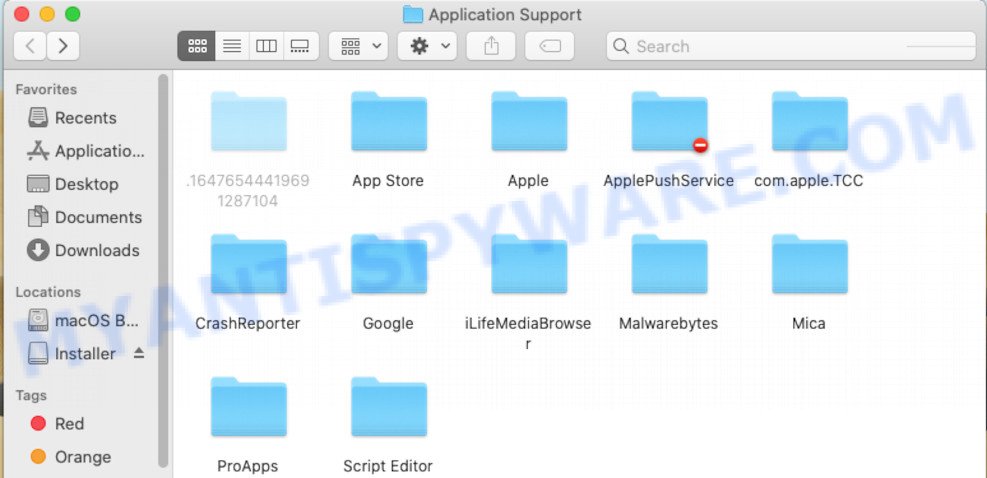
This will open the contents of the “Application Support” folder. Look carefully at its contents, pay special attention to recently added/changed folders and files. Check the contents of suspicious folders, if there is a file with a name similar to com.ComputingInteractive.system, then this folder must be deleted. Move all suspicious folders and files to the Trash.
Check for ComputingInteractive generated files in the “~/Library/LaunchAgents” folder

In the “Go to Folder…” window, type the following text and press Go:
~/Library/LaunchAgents

Proceed in the same way as with the “/Library/LaunchAgents” and “/Library/Application Support” folders. Look for suspicious and recently added files. Move all suspicious files to the Trash.
Check for ComputingInteractive generated files in the /Library/LaunchDaemons folder
In the “Go to Folder…” window, type the following text and press Go:
/Library/LaunchDaemons

Carefully browse the entire list of files and pay special attention to recently created files, as well as files that have a suspicious name. Move all suspicious files to the Trash. A few examples of files to be deleted: com.machelper.system.plist, com.search.system.plist, com.installapp.system.plist, com.macsearch.system.plist and com.ComputingInteractive.system.plist. In most cases, adware, browser hijackers and potentially unwanted programs create several files with similar names.
Scan your Mac with MalwareBytes
We recommend using MalwareBytes Anti-Malware. You can download and install MalwareBytes Anti-Malware to detect and remove ComputingInteractive associated apps from your Mac. When installed and updated, the malicious software remover automatically finds and removes all security threats present on the computer.
MalwareBytes can be downloaded from the following link.
21008 downloads
Author: Malwarebytes
Category: Security tools
Update: September 10, 2020
Once the download is complete, close all software and windows on your computer. Open a directory in which you saved it. Run the saved file and follow the prompts.
Once setup is complete, you’ll see window as displayed on the image below.
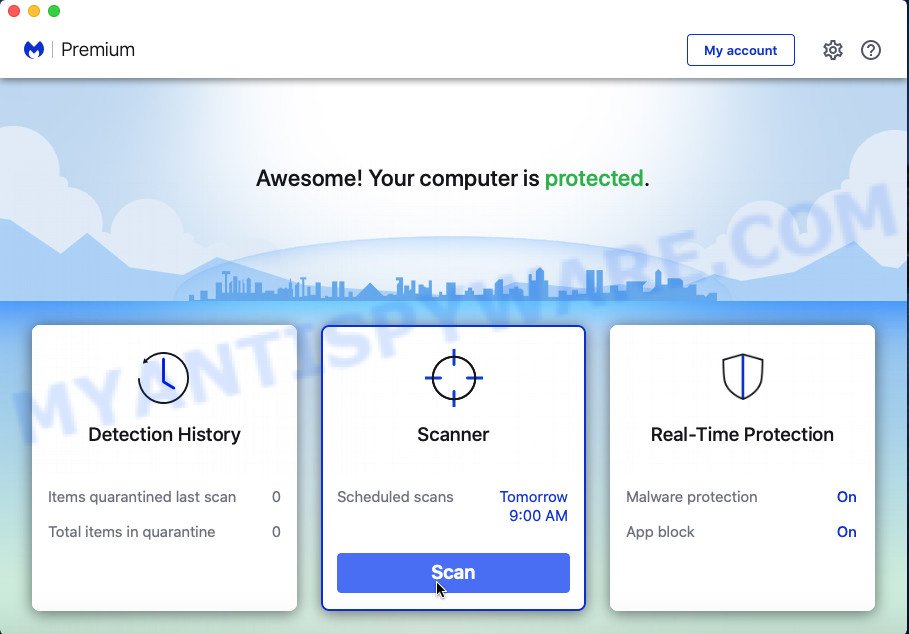
Now press the “Scan” button to perform a system scan with this tool for the ComputingInteractive adware. While the MalwareBytes AntiMalware tool is scanning, you may see how many objects it has identified as being affected by malware.
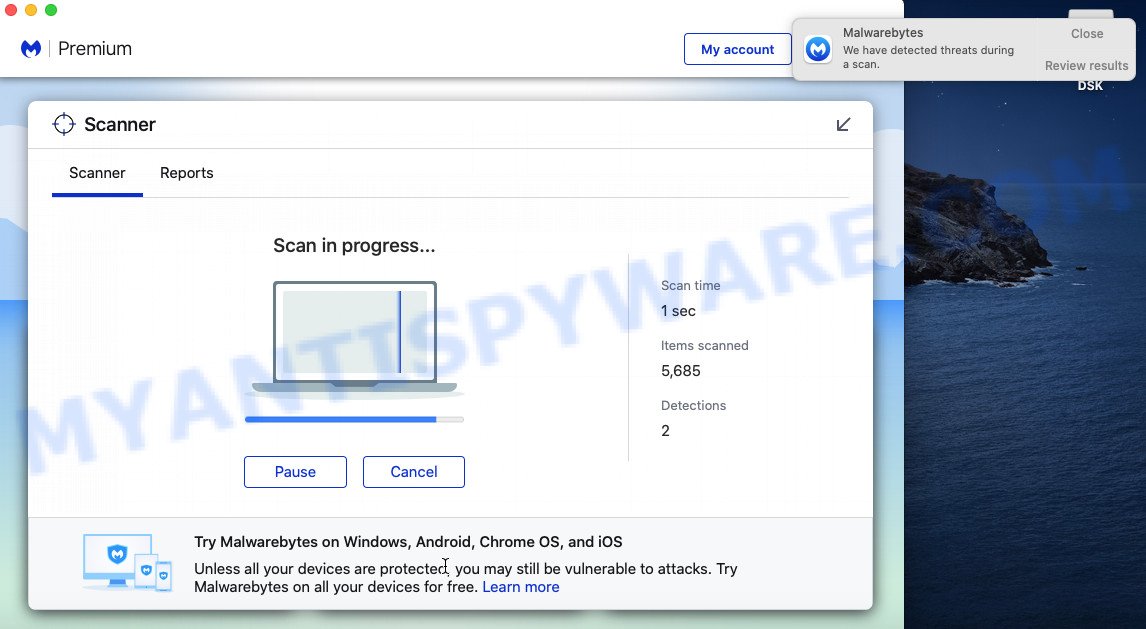
Once MalwareBytes has completed scanning your MAC, the results are displayed in the scan report. All found items will be marked. You can delete them all by simply press “Quarantine” button.
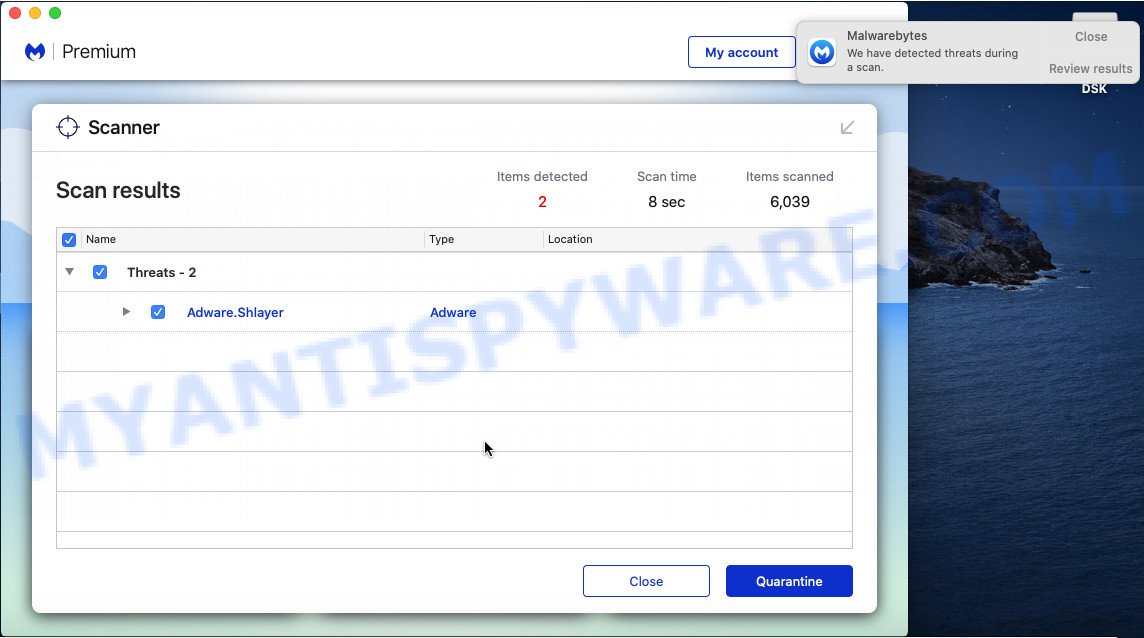
The Malwarebytes will now remove ComputingInteractive .
Remove ComputingInteractive from Safari, Chrome, Firefox
Annoying ComputingInteractive adware or other symptoms of adware software in your web-browser is a good reason to find and remove harmful add-ons. This is an easy method to recover browsers settings and not lose any important information.
You can also try to delete ComputingInteractive adware by reset Google Chrome settings. |
If you are still experiencing problems with ComputingInteractive adware removal, you need to reset Mozilla Firefox browser. |
|
How to stay safe online
The AdGuard is a very good adblocker application for the Mozilla Firefox, Safari and Chrome, with active user support. It does a great job by removing certain types of unwanted advertisements, popunders, pop-ups, unwanted newtabs, and even full page ads and web-page overlay layers. Of course, the AdGuard can stop malicious web pages automatically or by using a custom filter rule.
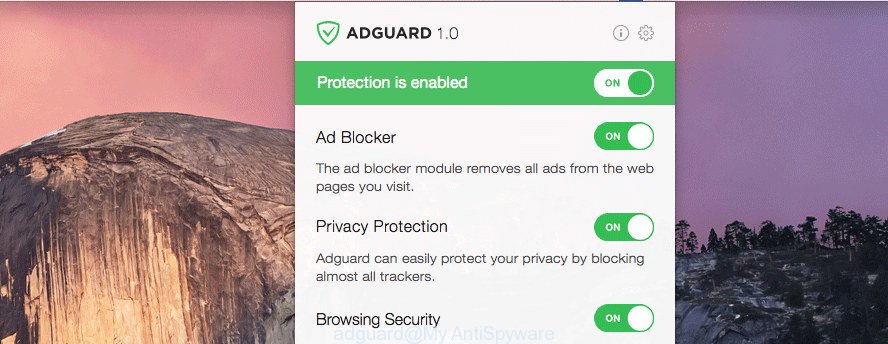
AdGuard can be downloaded from the following link.
3779 downloads
Author: © Adguard
Category: Security tools
Update: January 17, 2018
After the downloading process is done, start the downloaded file. You will see the “Setup Wizard” screen. Follow the prompts.
Each time, when you start your MAC, AdGuard will launch automatically and stop intrusive popup ads, block malicious and misleading web-pages.
To sum up
We suggest that you keep MalwareBytes AntiMalware (to periodically scan your Apple Mac for new adwares and other malicious software) and AdGuard (to help you block intrusive ads and harmful websites). Moreover, to prevent any adware, please stay clear of unknown and third party programs.
If you need more help with ComputingInteractive adware related issues, go to here.
